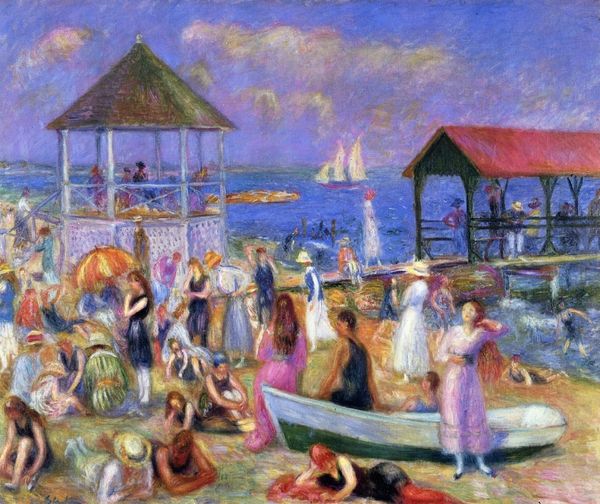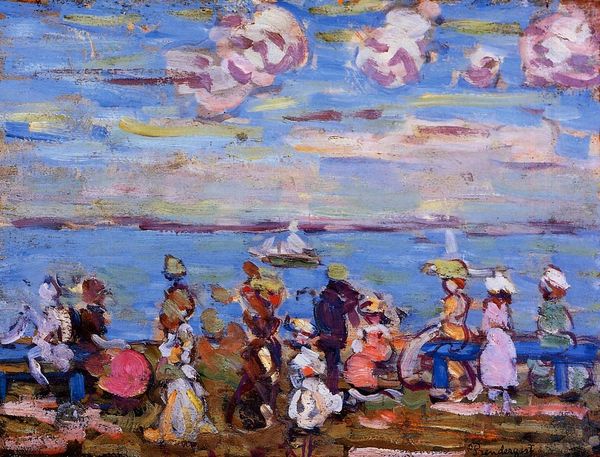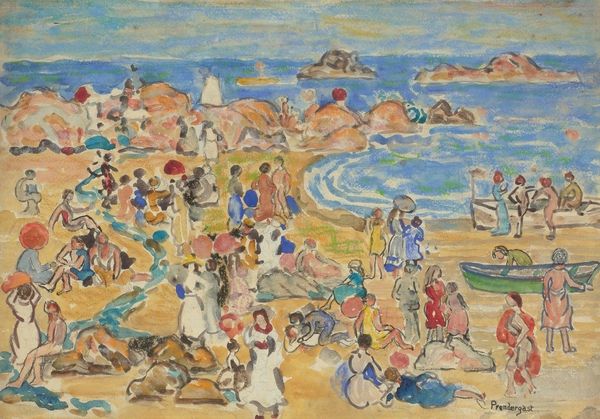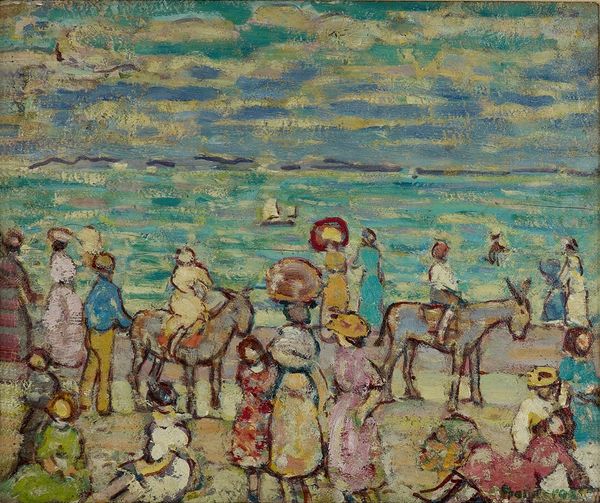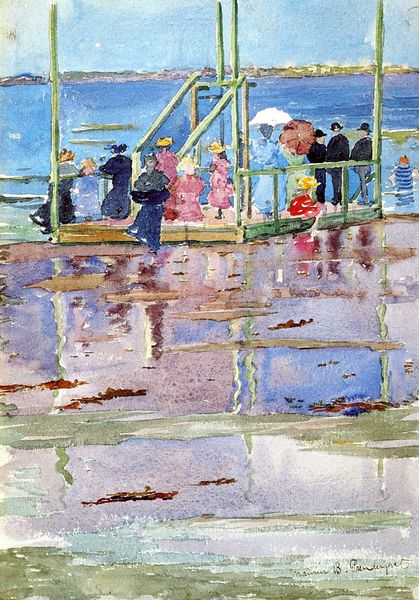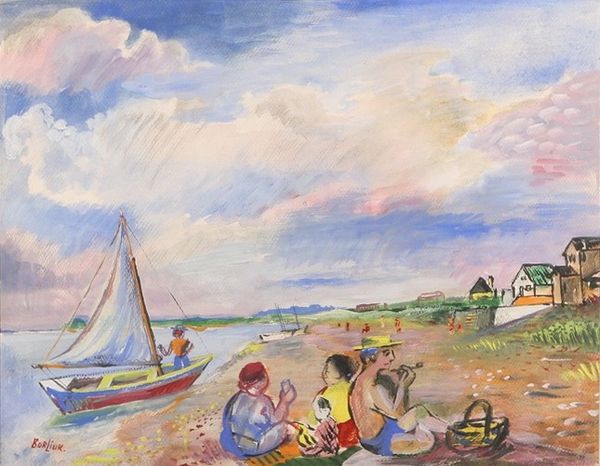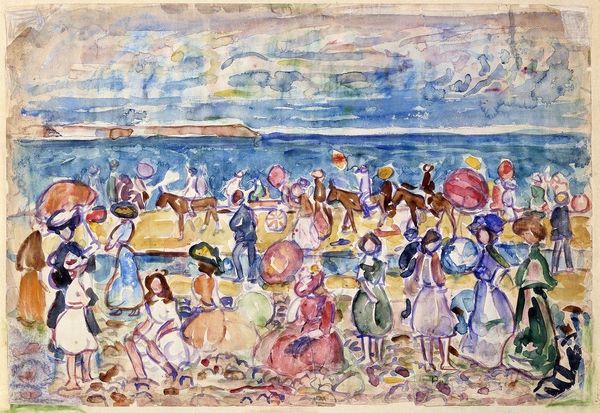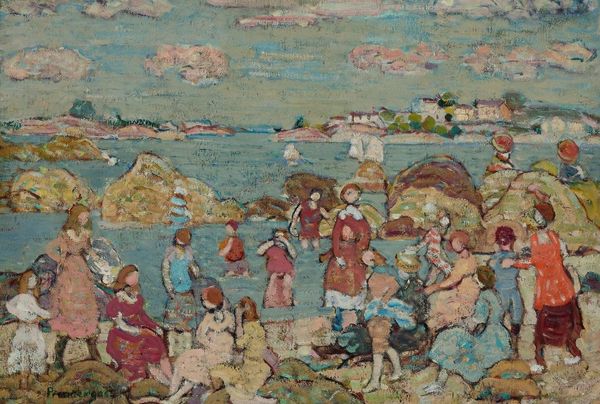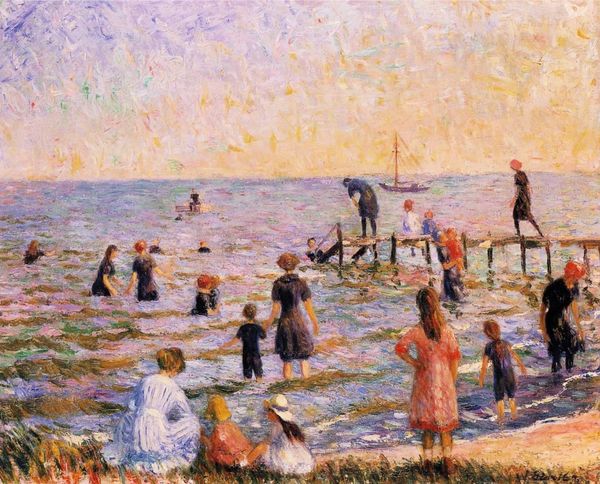
Copyright: Public domain
Curator: What a dreamy scene. William Glackens’ 1919 painting, “The Bandstand,” truly captures a moment of leisure and light. The scene pulses with a breezy kind of energy. What’s your first impression? Editor: I'm immediately struck by its impressionistic qualities. The colors, especially the blues and oranges, suggest a kind of escapism. But underneath that shimmering surface, I wonder, is it just celebrating carefree joy, or are there other narratives we could explore? Curator: Well, Glackens was deeply involved in depicting everyday life, often choosing to focus on ordinary people in urban settings. You see that bandstand perched between two beaches on the canvas as almost a stage where society is revealed and reflected. In that time the leisure on view would not have been available for most. Editor: Exactly. It's vital to remember the social realities behind such scenes of leisure. This image presents us with predominantly white figures enjoying what was, at that time, a class and racially segregated space. Who has access and the reasons why? The soft brushstrokes almost disguise that the picture presents not just any scene but the privilege that determined what such a day at the beach looked like. Curator: Indeed. You can feel Glackens playing with the dynamic between specificity and generalization. The figures are rendered with swift strokes, becoming more like types than portraits of specific individuals. This elevates it beyond mere depiction. It becomes symbolic of summer itself, and speaks to the promise of public enjoyment and how its role shifted across classes, geographies, and race during the 20th century. Editor: And those colors, so soft and sun-drenched, they’re strategic too. Glackens situates himself within impressionist art but also the project of myth-making; here creating the image of a harmonious summer day while many remained excluded or had that leisure facilitated at their expense. Curator: Absolutely. As we look closer, we see the complex interplay of brushstrokes; his deft handling of paint builds to that vision. One that both speaks to universal longings while whispering the inequities inherent in its realisation. Editor: So, in the end, "The Bandstand" does more than celebrate. It also poses vital questions about belonging and how cultural memories, and historical realities are created and, just as significantly, whose are lost in those nostalgic scenes. Curator: It's a powerful reminder that beauty and critical awareness can coexist. Editor: Precisely. Art history shouldn't shy away from the nuanced and often uncomfortable truths woven into even the most seemingly idyllic scenes.
Comments
No comments
Be the first to comment and join the conversation on the ultimate creative platform.
